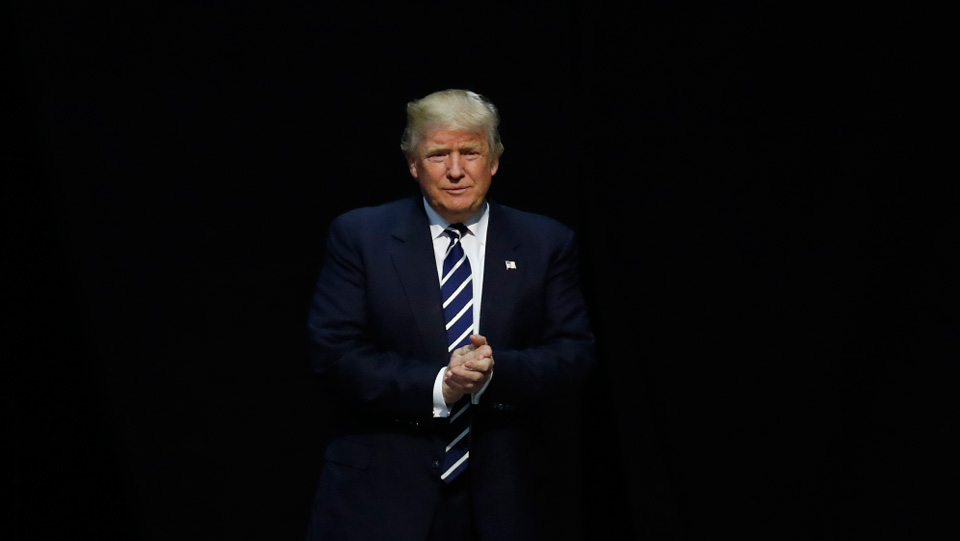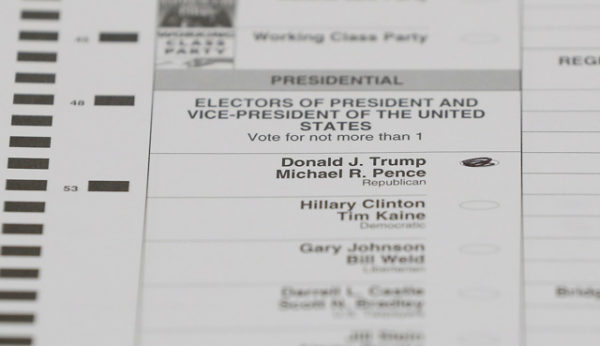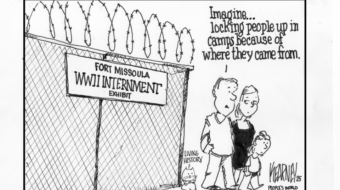
In this, the first of three articles he has written on the election, People’s World contributor Marc Brodine sorts through some of the hype around demographics and discusses coalition-building in the wake of this year’s vote.
During the long primary and election campaigns of 2016, it became clear that few if any of the old political rules apply anymore. We need to take a long and detailed look at the 2016 elections in order to develop the best strategy to resist the unconstitutional attacks that Trump is already proclaiming. We need to build coalitions and movements, both short-term on specific issues and long-term on wide-ranging fronts. We also need to learn from history, including from the anti-fascist struggles of the last century. In this article and the two that follow, I’ll try to do just that.
Changing the rules
First of all, it’s necessary to remember the role of the Sanders campaign. It activated tens of thousands of young people (though we need to note that part of the response to his campaign was due to his decision to run in the Democratic Party primary and to the real possibility he might win). Sanders made a principled stand of refusing big money PAC donations, relying instead on millions of small donations and doing an end run around the stranglehold that money has on both major parties. His rallies and fervent supporters demonstrated the hunger for change, the rejection of politics as usual, and the new openness to socialism.
Second, many aspects of the Trump campaign blew up the traditional rules of Republican politics: outrageous statements, stoking controversy to play the media and score billions in free advertising, flirting with the racist and fascist ultra-right, open sexism and anti-immigrant prejudice, and direct attacks on the GOP establishment itself. Trump called for unconstitutional actions including torture and the intentional bombing of civilian populations and toyed with an assortment of conspiracy theories. These all went against expected norms.
The “Trump phenomenon,” however, was not a fundamental restructuring of U.S. electoral politics. His candidacy and the response to it demonstrate how the old methods of ruling class politics don’t work in the same ways anymore. His victory has resulted in the potential for a fundamental shift in the way political power is used.
While we should reject all claims of false equivalence between right-wing and left-wing populism, it was clear that millions of people rejected politics as usual. The word “populism” is generally used to describe the style of appeal made to voters – addressing, or seeming to address, the needs of millions. Using “populism” to describe both right and left, however, hides a fundamental difference in the actual content of what politicians propose. Right-wing populism demagogically and rhetorically speaks to the working class, while left-wing populism proposes actual programs to solve the challenges that workers and poor people face.
Because the ruling class is no longer able to rule in the old way but the left is not strong enough to pose a realistic alternative (not in policy, but in raw power terms), we see odd and unexpected developments. “Right-wing populists” like Trump are one of them.
Allied with the worst elements of the ultra-right base (such as the KKK and various “white nationalist” groups), he is at the same time closely allied with the worst elements of the Republican policy elite – the Gringriches, the Giulianis, the Gaffneys.
His incoherent and contradictory policy statements result from this alliance of disparate constituencies, combined with the need for populist rhetoric to attract the base. It’s the tenuous job of uniting the disaffected with the elite ultra-right and their anti-worker policies.
Did the “white working class” give us Trump?
Especially in the first few days after the election, there was much punditry about how the “white working class” had undergone a shift to the right. This notion took hold and was uncritically accepted by many, including on the left. For several reasons, this conclusion is limited at best.
For starters, there is no such homogenous thing as the “white working class.” Our working class is multi-racial, multi-national, multi-generational, and multi-gender. There was not a shift in the working class as a whole, nor among all white workers, and the Trump vote was not all about economic insecurity. Voters with incomes under $50,000 voted in their majority for Clinton.
Furthermore, it’s worth remembering yet again that Clinton won the popular vote by a significant margin, over 2.7 million as of this writing. This would not have been possible without tens of millions of white people voting for her.
For some, casting a Trump ballot was a protest – an expression of their anger against lost jobs, stagnant wages, and disappearing opportunities. While it is true that their tolerance for his racism, sexism, and ultra-nationalism is morally indefensible, it also indicates some of the fault lines that run through the Trump coalition. Polls show huge numbers of people who voted for Trump do not trust or respect him. Some of them can be won to a real progressive program.
Trump’s victory can also be linked to his winning, against all expectations, college-educated whites, including women. This still links his victory to racism, but it doesn’t blame workers or white workers alone for it. Trump won a majority of white voters in every category – men, women, college-educated, and lower-income. To view racism as a problem confined to the working class actually underestimates the scope of the challenges we face in winning a majority of whites to an anti-racist program.
Trump’s vote totals in most places (though not all) did not exceed those of McCain in 2008 or Romney in 2012. This further refutes the claim that a major shift in working class whites’ voting patterns is responsible for Trump’s Electoral College win. In some key areas, the fall-off in Democratic votes among African American and Latino voters accounts for the razor-thin margins for Trump in a few states. Of course this does not mean that those voters are any more “to blame” for Trump’s win than “the white working class.” It just points to the facile, superficial, and false readings of the meaning of the election.
Not all Trump voters were motivated by racism, nor were all Clinton voters free of racism. The reality that there is a significant number of white voters who voted twice for Obama and then for Trump shows that understanding consciousness among white voters is not a binary exercise. They were not free of racism just because they voted for an African American, nor are they racist (or only racist) because they voted for Trump.
This misreading of numbers is not just a problem of oversimplifying trends among white voters, either. A noticeable percentage of Hispanic voters cast a ballot for Trump – a minority to be sure, but still more than voted for Romney.

Real shifts in voting
There were some important developments in voting patterns which do force us to look at deeper trends though. To focus solely on any single or partial explanation does a disservice to the anti-Trump movement. The sweeping shifts that many blame for Trump are mostly a figment of the imaginations of pundits and political professionals. As Mike Davis argues, writing in Jacobin, we need to look at the real details of voters and voting patterns.
- There were significant shifts among some regional groups of voters, including among white workers in parts of the so-called Rust Belt and among predominately white rural voters nationwide (though even much of this is still in dispute).
- There was a decrease in the percentage of voters who turned out among Democratic constituencies. Some of this is attributable to the identification of Clinton with an establishment that talks a good line about addressing worker’s needs but often fails to translate any of it into real, immediate changes on the ground.
- Some of the lower Democratic turnout is attributable to successful Republican efforts at voter suppression. Exactly how much is not yet clear, but voting days were reduced, ID requirements were made more stringent, and the number of polling places was cut in many districts.
Finding fault lines in Trump’s coalition
Hearing what Trump voters are telling us requires the tough job of figuring out why so many voted against their real economic interests.
Christian Parenti spent many hours listening to Trump’s speeches. In an article in Jacobin, he discusses the cognitive dissonance of Trump’s messaging which resulted in many workers hearing and believing the false populism but not the racism, misogyny, and xenophobia. Parenti argues that while Trump is indeed a fraud and will disappoint many of his voters, the left should not discount the appeal of some of his rhetoric – both the racism as well as the (phony) anti-war and anti-corporate rants.
Trump’s voting coalition is a mix of those attracted to these two contradictory messages. Seeing the fault lines in this coalition with an eye to defeating his policies is necessary to building a successful coalition capable of defeating him.
The point is to understand people who can and must be won to the anti-Trump side, regardless of how they feel at this moment. To ignore the bigotry of many who supported him would of course be morally flawed. But the fact that many such Trump voters (and election abstainers) do not buy into his entire program is an opportunity to win them away from supporting him on many, many issues.
Some people confuse anger, even justified anger, with a coherent strategy. We face two trends on the center-left. One, mainly in parts of the left, demands that strategy and anti-Trump activities be judged by how militant they are. The other, mainly resident in the center, demands that actions be judged solely on the basis of how broad they are. Both are mistakes.
Developing strategy is about drawing the lines broadly enough that we include all the people who need to unite in order to be strong enough to win. The point of searching for Trump coalition fault lines is to look for ways to maximize division among our opposition and strengthen the unity of our side. These are not abstract moral questions alone; they are also questions of practical politics – of winning the active support of a majority.
Sympathy, empathy, or solidarity?
Reacting to various explanations of Trump’s victory that ascribe it only to the economic pain of white workers, some are responding with anger. They are tired of being asked to “understand” or “empathize with” the pain of white workers who do not acknowledge the pain of women and minorities. This anger is understandable and justified, though their way of expressing it is not always constructive. And focusing on anger alone could enable us to miss several important points.
- 1. Expecting empathy requires that it be offered as well – empathy is a two-way street.
- 2. What the anti-Trump movement needs is not bland, pitying empathy but rather increased mutual understanding, support, and solidarity.
- 3. Since there was not a significant shift among white workers toward Trump nationally, blaming all white workers everywhere does not help build a coalition capable of defeating Trump – something in the interests of all workers, immigrants, poor people, people of color, women, students, environmentalists, good government folks, and many others including many faith communities.
- 4. Contrary to the claims of the “white privilege” theorists, it is not the most important truth that “For hundreds of years, white people have controlled everything in this country.” While true in a literal sense, this way of understanding history refuses to look at the differences within this amalgam of different groups of “white people.” Most white people, the vast majority, have never “controlled” this country, not even most of those who are explicitly racist. That control has always and continues to be exercised by the ruling class – in modern times, that means the capitalist class.
While this class is overwhelmingly white and male, that does not mean that the majority of whites or males benefit from the current power structure. They benefit from not facing the oppression and discrimination that others face, but that does not make them participants in the power structure or beneficiaries of the capitalist system. The latter is a system that benefits only a relative few white males and others.
When we conflate the ruling class with all white people, we end up ignoring the real interests of white workers. We end up unnecessarily driving white workers into support for ruling class politicians. There are certainly important differences in how whites and males are treated compared to everyone else, but we must not confuse that with the exercise of real political and economic power.
- 5. Some conservatives, already anti-Trump, can be won to the fight for full democracy. While we should have no illusions that all those who spoke out against Trump during the primaries or after his nomination victory will be consistently anti-Trump for the long haul, neither should we write off all conservatives as potential allies. They may be partial, temporary, vacillating allies, but the movement needs those alliances just the same.
- 6. One challenge to building unity is that many people of color have had their confidence in the possibility of broad unity shaken by the election results and some of the superficial analysis that appeared in the first few days. Rebuilding trust and hope in the potential of winning white workers and white women (categories that are not identical but that do overlap) to an anti-racism program is necessary.
Subsequent parts of this article will appear in People’s World soon.










